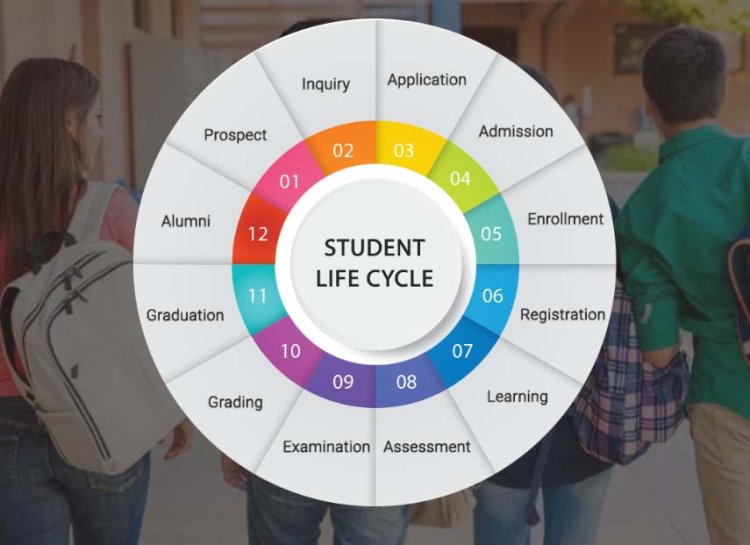Latest Technologies and Advancement In Admission Portal for Educational Institutes
The fast paced moving technology around the globe is not only limited to big infrastructures of IT’s, banking and more, but also has expanded its wings to the educational domains and its entire process of student management. Some key advancements in admission portals for educational institutes have significantly enhanced efficiency, transparency, and user experience. The latest technologies in student lifecycle management for educational institutes focus on enhancing personalization, and data-driven decision-making throughout the admission process and beyond. These advancements collectively improves the overall admission process, personalized, secure while making it more efficient, user-friendly, and transparent for both applicants and educational institutions alike.
Share this Post to earn Money ( Upto ₹100 per 1000 Views )

Here are some cutting-edge technologies:
1. Online Application Process : Traditional paper applications have been replaced by online forms, making it easier for applicants to submit their information from anywhere in the world. This reduces administrative burden and speeds up the process.
2. Mobile Compatibility : Modern admission portals are often mobile-friendly or have dedicated mobile apps, catering to the increasing number of users accessing information through smartphones and tablets.
3. Integration with CRM Systems : Many portals now integrate with Customer Relationship Management (CRM) systems, allowing institutes to manage prospective student relationships more effectively and personalize interactions.
4. Automated Notifications : Applicants receive automated notifications about their application status, deadlines, and any required documents, reducing anxiety and keeping them informed throughout the process.
5. Document Upload and Verification : Applicants can upload documents directly to the portal, which are then verified electronically, reducing errors and speeding up verification times.
6. Payment Processing : Integrated payment gateways allow applicants to pay application fees securely online, reducing paperwork and administrative workload.
7. Analytics and Reporting : Admission portals often include analytics tools that provide insights into application trends, demographics, and conversion rates, helping institutions make data-driven decisions.It also Provide administrators with actionable insights and visualizations to monitor admissions metrics and adjust strategies accordingly.
8. Personalized Dashboards : Applicants, once logged in, have access to personalized dashboards where they can track the status of their application, view checklist items, and receive personalized recommendations.
9. Virtual Tours and Webinars : Some portals offer virtual tours of campuses, webinars with faculty, and other interactive features to help prospective students make informed decisions about their application.
10. Security and Data Privacy : Robust security measures ensure that applicant data is protected, and compliance with data privacy regulations (like GDPR) is maintained.
11. Artificial Intelligence (AI) and Machine Learning (ML) :
Predictive Analytics : AI algorithms analyze historical data to predict applicant behavior, identify at-risk students, and forecast enrollment trends.
Chatbots and Virtual Assistants : AI-powered chatbots handle routine inquiries, provide 24/7 support, and guide applicants through the admission process.
12. Internet of Things (IoT) :
Smart Campus Solutions : IoT devices track student movements, campus assets, campus inventory, optimize resource usage (like classrooms and libraries), and enhance campus safety.
13. Virtual Reality (VR) and Augmented Reality (AR) :
Virtual Campus Tours : VR allows prospective students to explore campuses remotely, experiencing facilities and classrooms as if they were physically present.
AR Applications : Enhance orientation programs and campus navigation for new students.
14. Cloud Computing :
Scalability and Accessibility : Cloud-based student information systems (SIS) and CRM platforms provide scalable infrastructure, enabling institutions to handle varying workloads and ensure data accessibility from anywhere.
15. Biometric Authentication :
Secure Access Control : Biometric technology (fingerprint, facial recognition) enhances security for accessing sensitive student information and campus facilities.
16. Personalized Learning Platforms :
Adaptive Learning Technologies : Platforms that adapt to individual student needs, providing personalized learning experiences based on performance data and preferences.
For more details visit: https://www.libsys.co.in/ or +911244894100
















